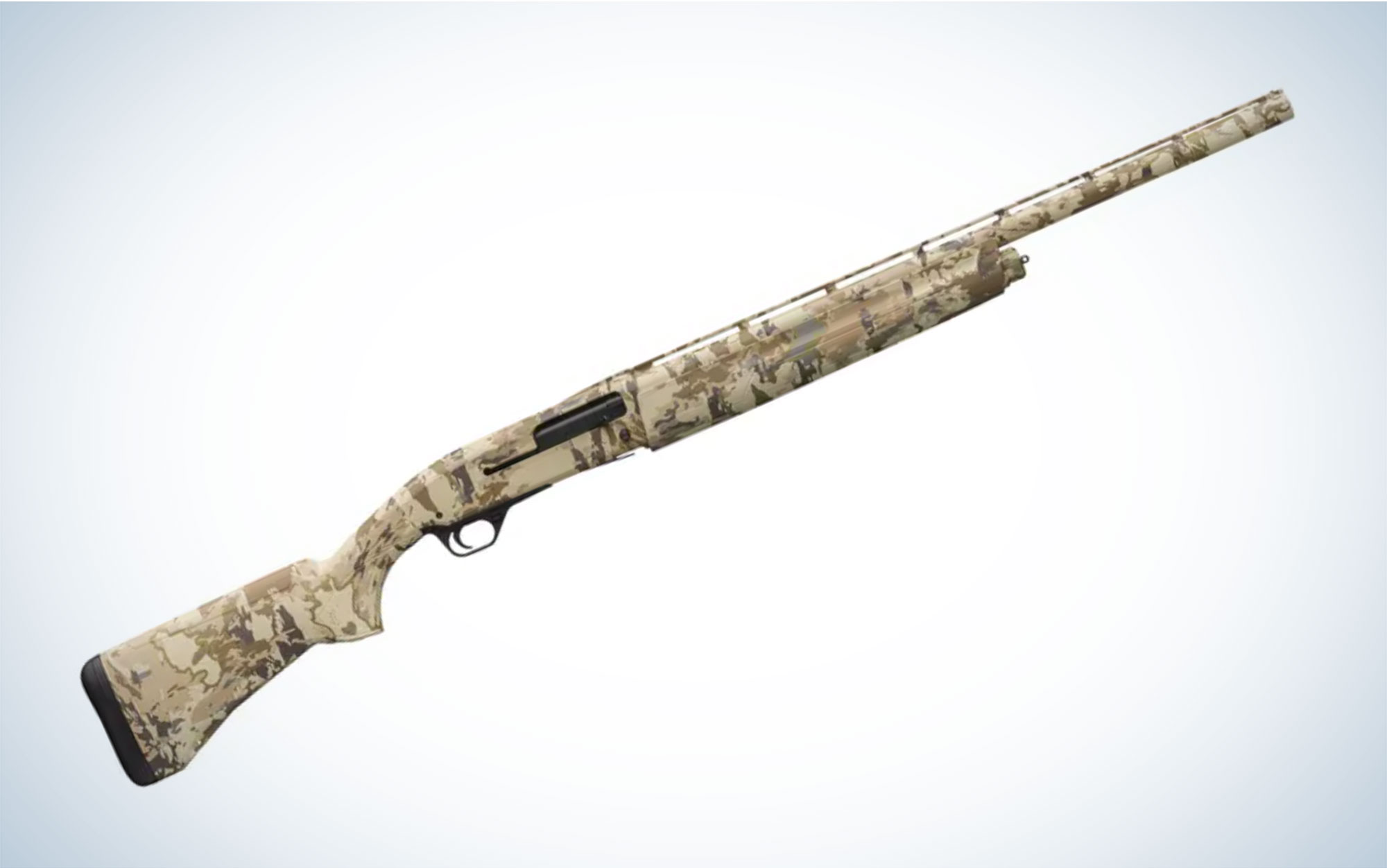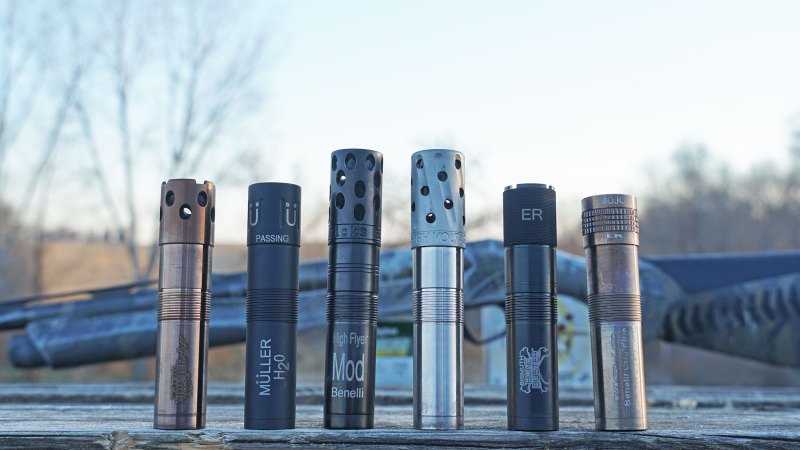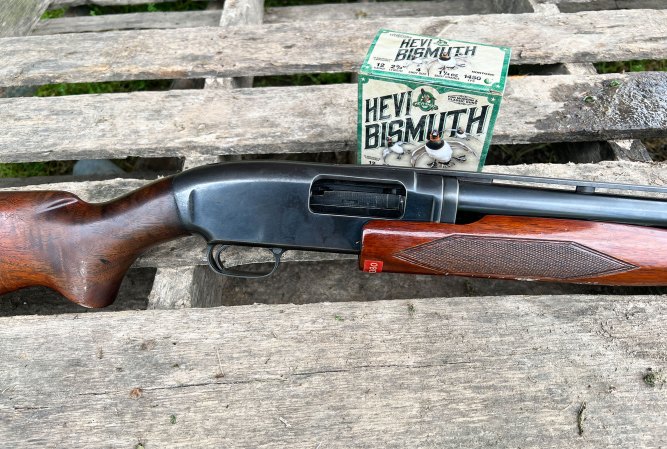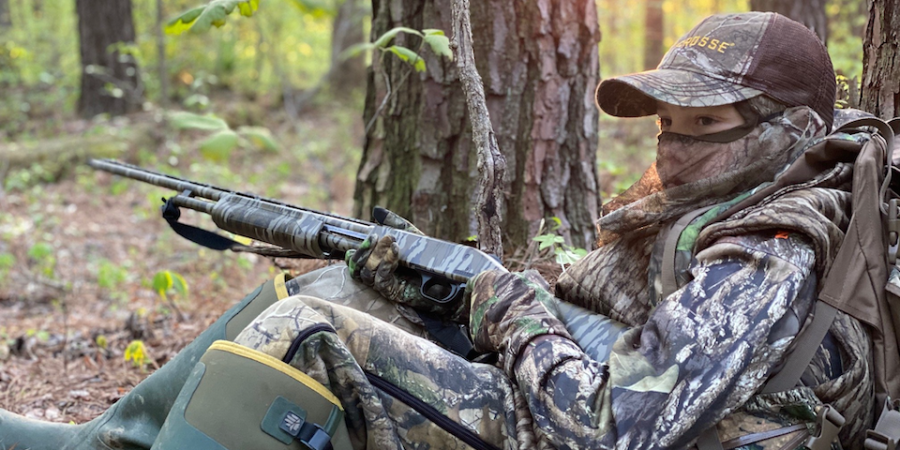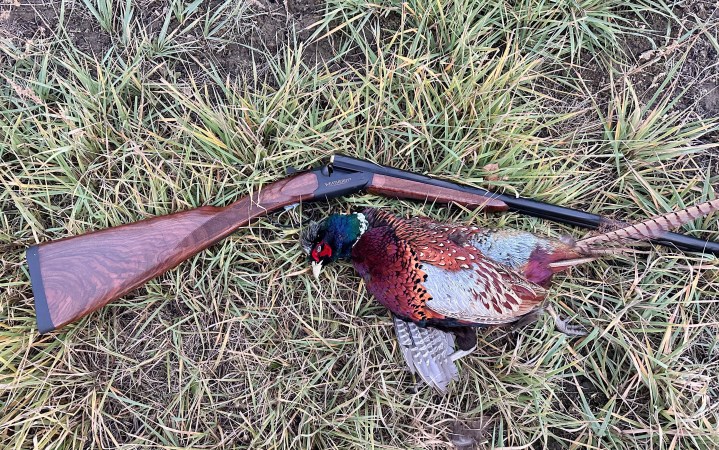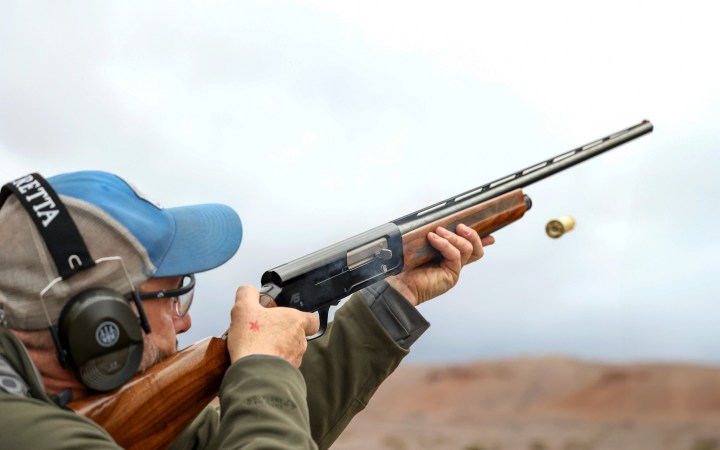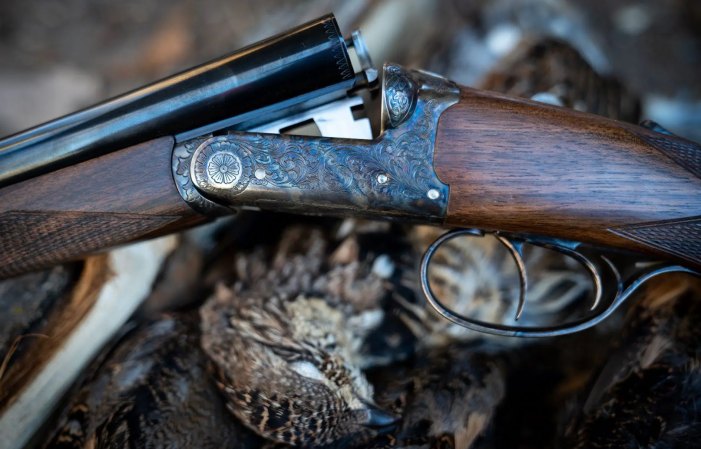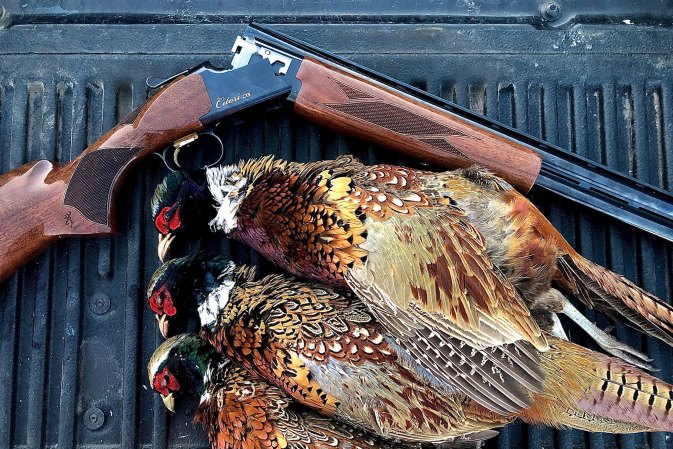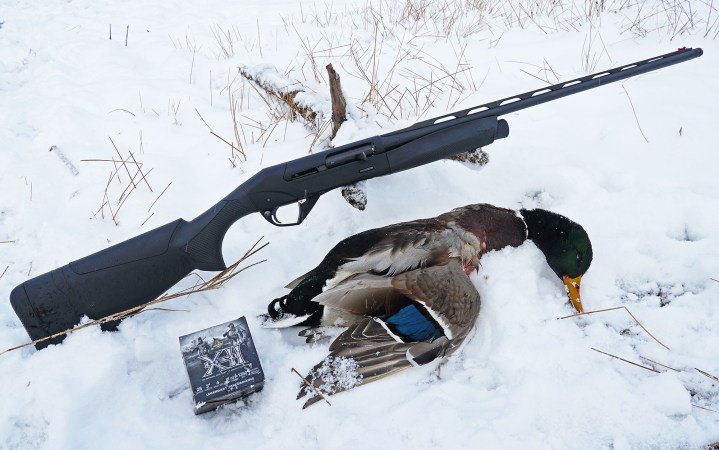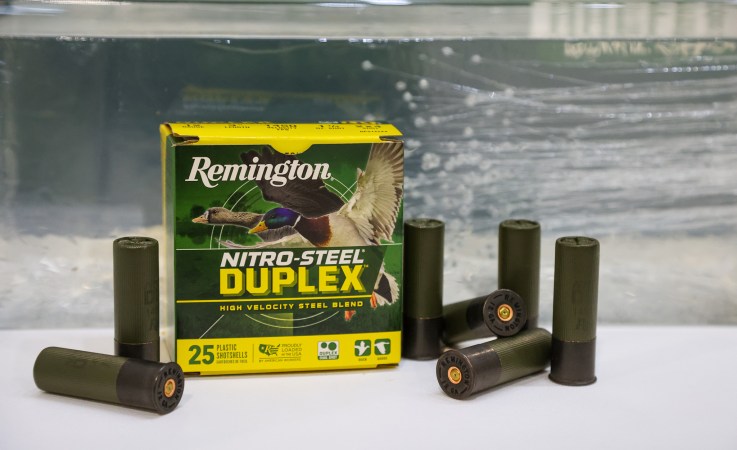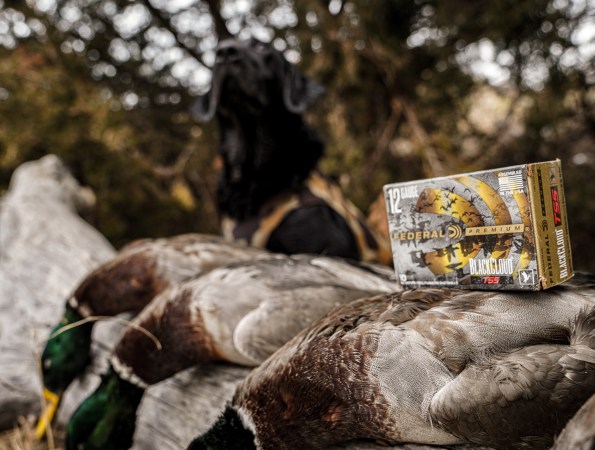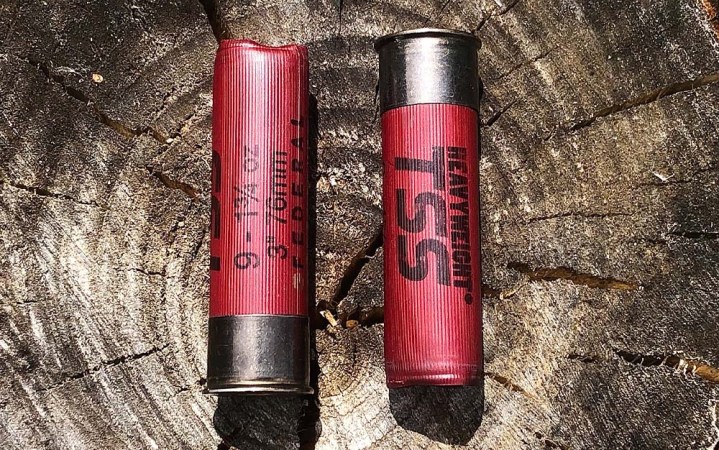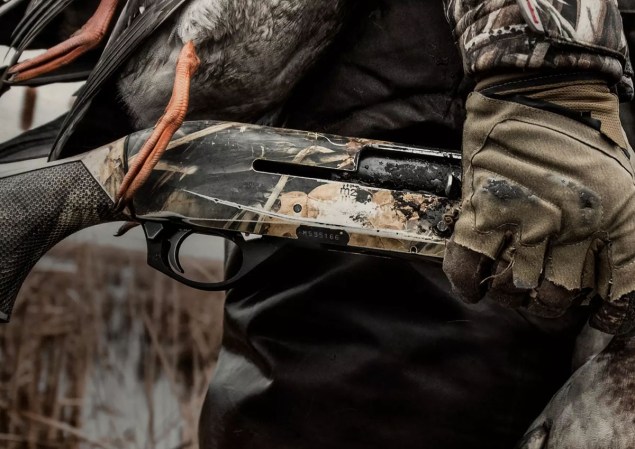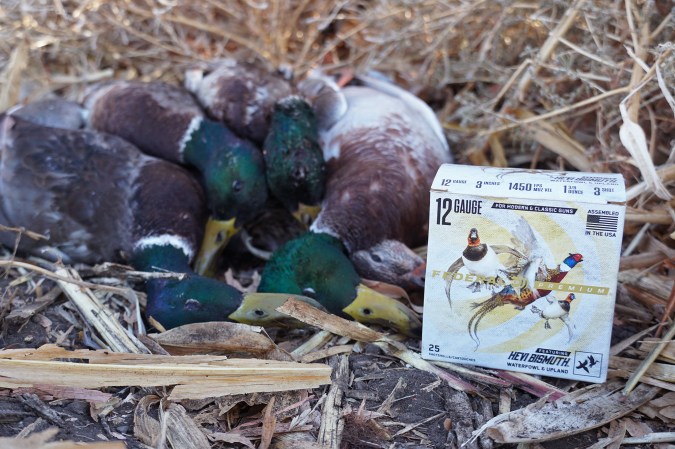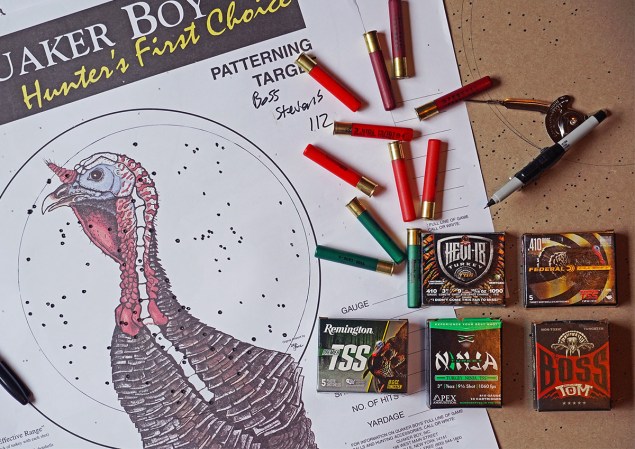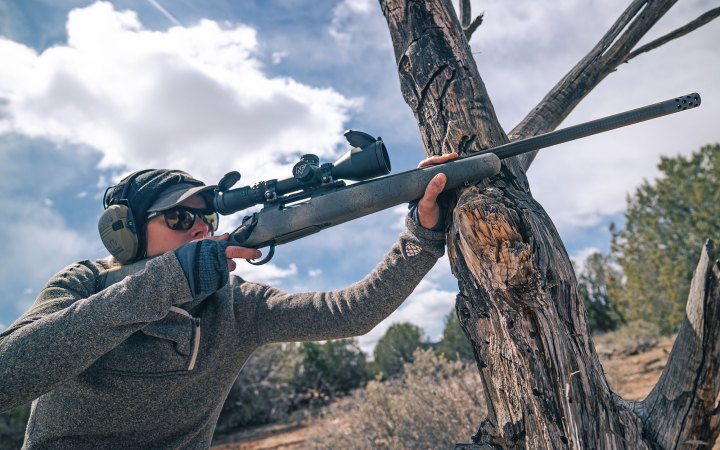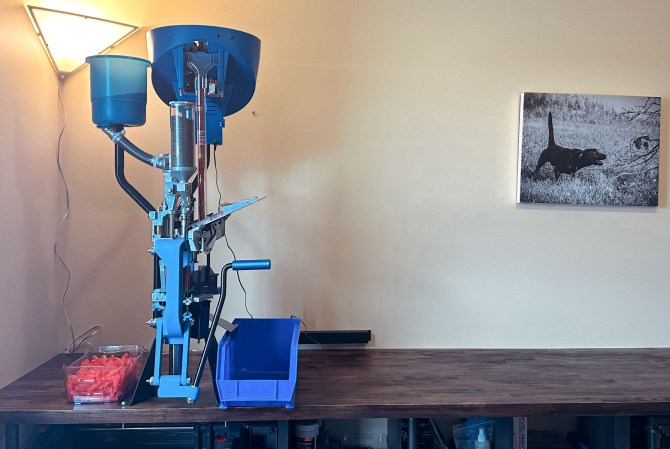We may earn revenue from the products available on this page and participate in affiliate programs. Learn More ›
In an era when sub-gauge shotguns have become popular, a small group of waterfowlers and turkey hunters cling to their 10 gauges. And looking into the future, it seems that big bore fans will need to hold on to their 10s a bit tighter. Browning, the last major North American shotgun manufacturer producing 10 gauges, confirmed that it has discontinued its semi-automatic Gold Light and that no new BPS pumps (including those in 10-gauge) will be assembled in 2024.
That means at some point you’ll likely have to search the used market if you’re looking to add a 10 to your collection. But a the moment there are still new 10 gauges in stock and the 10 still does have its merits. Plus there are plenty of ammo makers producing loads for it. Here, we’ll dive into the details of the America’s last big bore.
10 Gauge Shotshell Specs
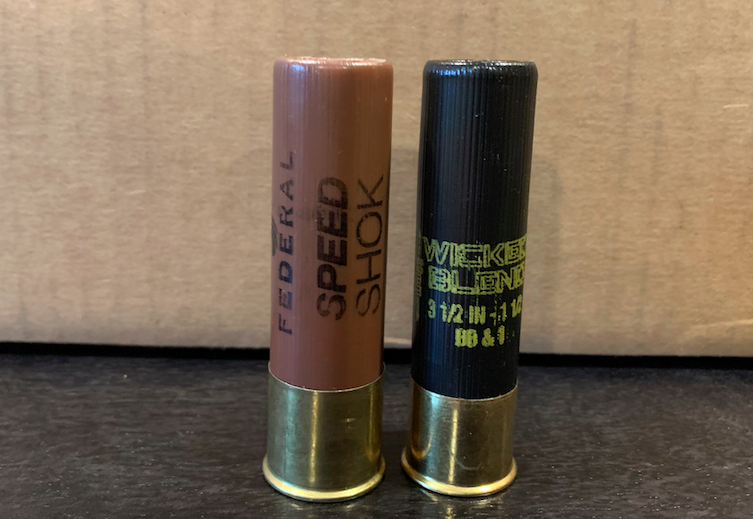
There are many 10-gauge shotshell offerings still in production. Lead turkey loads, buckshot, and deer slugs are offered in 10 gauge options. But steel shot for waterfowl remains the most popular. Other non-toxic pellet materials are loaded in 10 gauge as well, but for the specifications chart below, I’ll focus on a standard 3½-inch load of Federal Speed-Shok steel BBs.
- Year Introduced: 1932 (2 7/8-inch loads did exist before the 3½ magnum)
- Overall Length: 3½ inches
- Shot Type: Steel
- Shot Size: BB
- Payload Weight: 1½ ounces
- Pellet Count: 108
- Max Pressure: 11,000 psi
- Muzzle Velocity: 1,450 fps
Performance
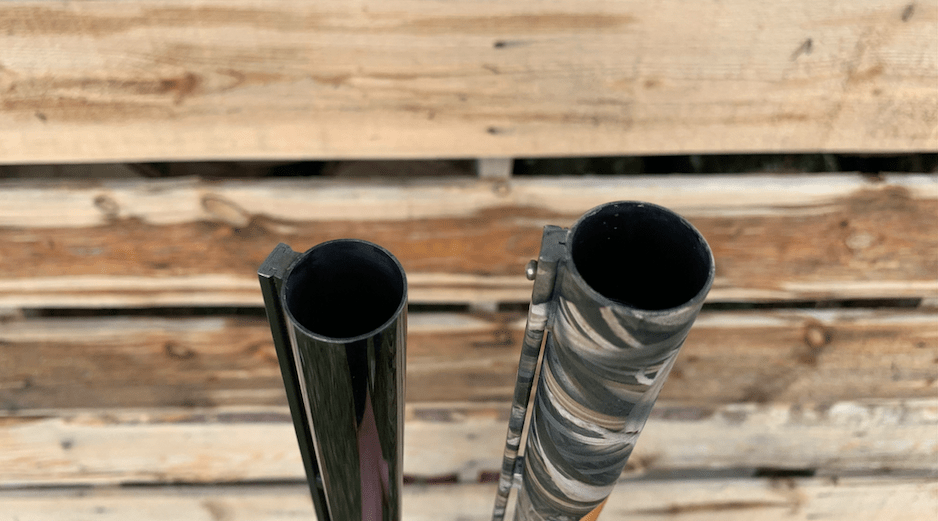
Because of its larger diameter and heavier payload offerings, the 10 should be able to put more large pellets on target at distance than any other common gauge. The bore diameter of a 10 gauge is .775 inches. For reference, a 12 gauge has a bore diameter of .729 inches. Outdoor Life conducted a 10 gauge vs. 12 gauge range test in 2021 and the results showed pattern percentages with steel BBs at 40 yards and beyond slightly favored the 10 over the 12. At 40 yards the 10 gauge put 81 pellets on target for a 79 percent pattern percentage. The 12 gauge put 59 on target for a 53 percent pattern percentage. However the 12 gauge actually outperformed the 10 with No. 2 pellets.
Federal Premium engineers saw similar results years ago when they put 3½-inch 10-gauge loads up against 3½-inch 12-gauge shotshells at their testing facilities in Minnesota. The computer read-outs from electronic pattern boards gave the edge to the 10, though not by much.
The advantage in shooting a 10 is so narrow that many hunters don’t feel the need to tote a heavier gun (most modern 10 gauges are between 9 and 12 pounds). A 12-gauge can weigh less than 7 pounds, making it a more versatile option to hunt with. There are also more non-toxic shotshell options available to hunters today than ever before, improving the lethality of smaller-gauge guns. That puts the 10 gauge in a precarious position. Although it is still effective, the availability of denser metals—bismuth and tungsten—has made the 10 gauge less attractive to most hunters.
A quick note about recoil. Many believe that the 10 gauge delivers unbearable recoil. That’s not true, particularly in the gas-operated auto-loaders, which have more tolerable recoil than most 12-gauge pumps or inertia-driven semi-autos. Because the 10 gauge is usually a heavier gun, it generally mitigates felt recoil better than a 12 does.
History
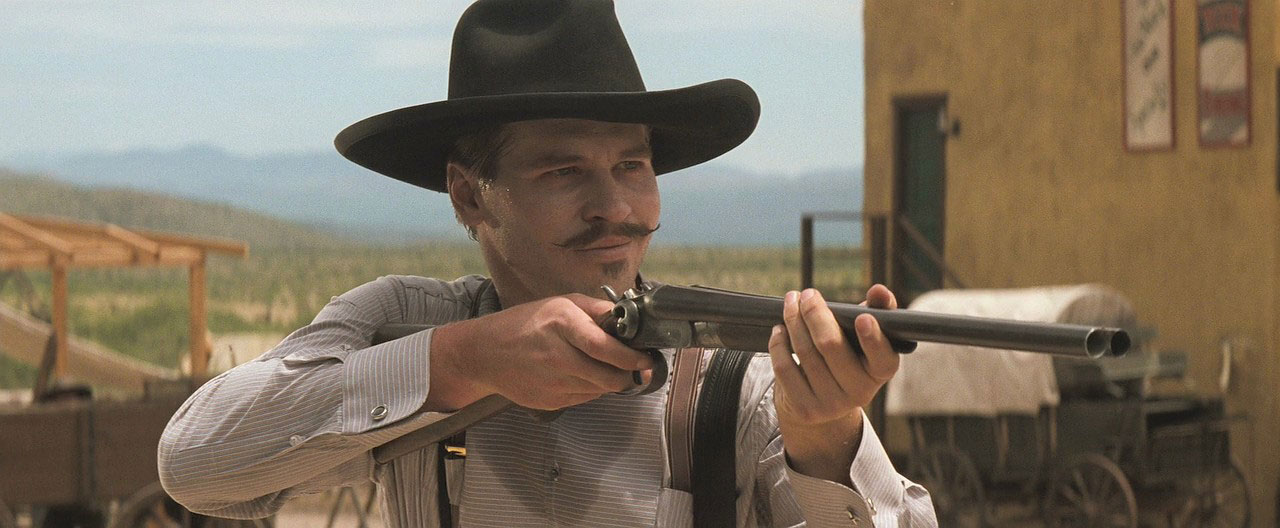
IMDB
By the 1860s, U.S. hunters were well familiar with the 10 gauge, shooting it on deer, waterfowl, upland birds, and small game. But the height of 10 gauge popularity in America is rooted in the Old West. English side-by-sides from Purdey, W.W. Greener, Westley Richards, and others had made it across the pond and into the hands of lawmen and settlers headed for the frontier. Remington’s Whitmore 1874 and the Colt Model 1878 were also popular in the late 19th century.
The 10 gauge coach gun, a standard hammer-operated double with shortened barrels, offered unmatched fire power at close range. Sheriffs, outlaws, and anyone wagon-training west would have benefited from carrying a 10 gauge for self-defense or intimidation.
The invention and improved ballistics of smokeless powder shotshells were responsible for advancing the 12-gauge. Ammunition was cheaper for the 12-gauge as well. By the 1920s, shotshells were predominately loaded with smokeless powder, and shooters saw the benefits of smaller gauge shotguns. There were fewer reasons to carry a heavy 10 gauge.
Lead Ban Creates an Opportunity for the 10
But in 1975, Ithaca introduced the gas-driven semi-automatic Mag-10, which began a brief 10 gauge renaissance. The soft-shooting Mag-10 followed by Remington’s SP10 (based on the Ithaca design) came along at just the right time. In 1987, the federal government began a ban of lead shot for hunting waterfowl. By 1991, the lead ban was nationwide.
Steel shot, which is not as dense (7.8 g/cc), replaced lead (11.3 g/cc) in duck blinds across the country. However steel pellets did not kill as efficiently. Most hunters assumed that because steel was lighter than lead, they needed more of it to kill ducks and geese. Since 10-gauge shotshells have heavier payloads, many waterfowler’s traded their 12s for 10s.
To be clear, it’s been proven that modern steel pellets can efficiently kill waterfowl, so long as you use the proper shot size and choke and shoot at reasonable distances.
“When compared with standard high-velocity 12-gauge loads containing 1¼ ounces of lead shot, steel loads of 1⅛ ounces have been found to compare closely in killing efficiency, up to approximately 45 yards,” wrote legendary Field and Stream Shooting Editor Bob Brister in his book Shotgunning: The Art and the Science, published in 1976, well before the lead shot ban.
So, the 10 gauge boom was due more to a perceived inadequacy of the 12 gauge, not an actual one.
A Rise in 3 1/2-Inch 12 Gauges
In 1988, Mossberg’s Ulti-Mag 835 pump shotgun debuted as the first 12-gauge chambered for Federal’s new at the time 3½-inch shotshell. Benelli came out with the 3½-inch Super Black Eagle a few years later. These developments sealed the 10 gauge’s fate as a niche firearm. The 12-gauge could hold nearly the same payload weight in a 3½-inch shotshell as the 10 but in a lighter, more versatile gun capable of shooting 2¾-inch and 3-inch offerings. These 3 1/2-inch guns became popular with waterfowlers even though they typically don’t deliver much better pattern performance than a standard 3-inch 12 gauge. Again, it was perception driving the market.
Finding a 10-Gauge Shotgun
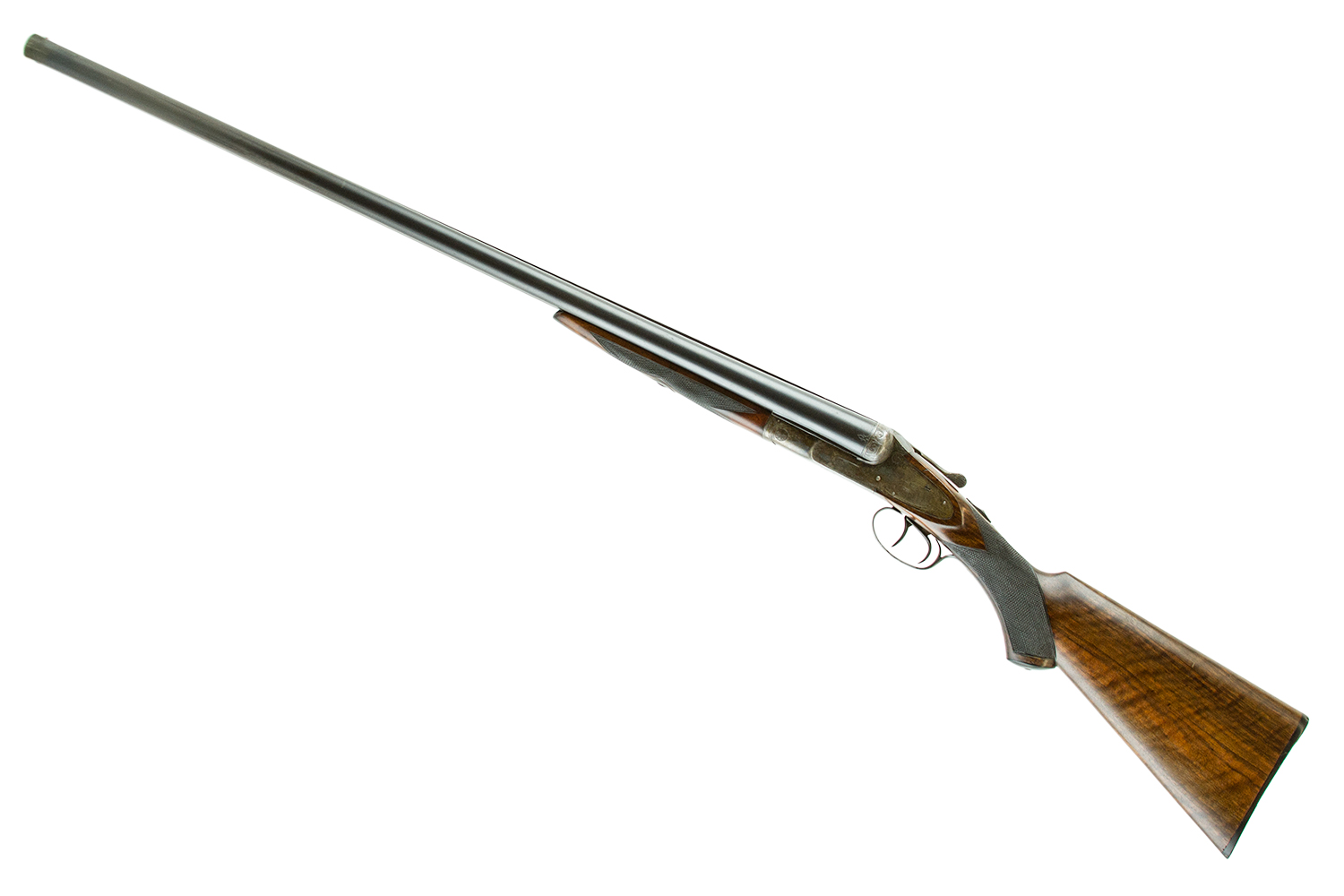
Steve Barnett Firearms
No major U.S. shotgun manufacturers are making 10 gauges any longer, but enough inventory remains that you can buy a new Browning Gold Light or BPS off the rack. Some bespoke shotgun houses will build a 10 gauge for you but be prepared to pay five figures.
The best place to find a 10 gauge is on the used market. Ithaca’s Mag-10 and the Remington SP10 are the most common models available. If you find one in good condition, it may cost as much as $2,000. Harrington and Richardson made single-shots in 10 gauge, like the Model 176, which has a full choked 36-inch barrel. H&Rs typically don’t run more than $1,000.
There are also a bevy of side-by-side shotguns, including the New Ithaca Double (made famous by gun writer Elmer Keith) and English doubles from Purdey, Holland & Holland, and others. Most of these guns are considered collector’s items.
There are a select number of used 10 gauge bolt-action shotguns available as well. Marlin’s Model 5510 Super Goose, based on the Marlin 55 Hunter platform, is probably the most well known. The Super Goose didn’t have a long run (1976-1985) but was noted for its incredible patterns at distance. A pass-shooting goose gun if there ever was one, the 5510 weighed 10.5 pounds and had a 34-inch barrel with a fixed full choke. A detachable magazine was plugged so hunters could only load two shotshells.
Finding 10-Gauge Ammo
You will pay more for 10-gauge shotshells than 12-gauge loads because the components cost more, and typically, the payloads are heavier, which means more shot is being packed into a 10. A 25-round box of Federal Speed-Shok 10-gauge 3 ½-inch No. 2s costs $55; the same offering in 12-gauge is $38.
Happily, plenty of ammunition manufacturers continue loading for 10 gauge. Steel waterfowl shotshells remain the most popular. Federal, Winchester, and Remington are all still shipping 10-gauge ammo every summer before duck season. Hevi-Shot and Boss both have 10-gauge bismuth offerings. If you have an older 10 gauge chambered for 2 7/8-inch loads, niche ammomakers like RST and Salt Creek periodically have shotshells available.
Turkey hunters can find lead loads from Federal, Winchester, and Remington. Hevi-Shot also makes a 10-gauge shotshell in its Magnum Blend, which contains a mix of 5, 6, and 7 Hevi-Shot pellets. Federal’s custom shop and some other niche ammomakers load TSS turkey shells. Apex Ammunition has a 3½-inch shotshell with a 2½-ounce payload. The No. 9 shot offering holds an incredible 905 pellets. Nick Charney of Apex Ammunition still shoots a 10 gauge for turkeys and has put 500 pellets inside a 10-inch circle at 40 yards with this load.
“On a 20-inch target, I can get about 88 to 92 percent pattern retention at 40 yards,” he said.
Finding slugs and buckshot for the 10 gauge is more difficult. Federal is the only major manufacturer that offers both.
The Future of the 10
As long as there are goose and turkey seasons, the 10 gauge will have a dedicated group of shooters. But its popularity has been significantly diminished by the advancement of 3 1/2 inch 12 gauges and non-toxic shot, particularly the affordability of some bismuth loads that are almost equal in price to premium steel shotshells.
At the same time, hunting and shotgun trends tend to be cyclical. For decades, the side-by-side lost favor with American hunters but has enjoyed a recent renaissance as more affordable, Turkish-made doubles flood the market. If semi-automatic shotguns continue to get lighter, maybe hunters will eventually tire of 12-gauge recoil and return to the heavy 10-gauge auto-loader, which produces less felt recoil even while firing those heavy payloads.
For now, the future of the 10 gauge is in limbo. Hopefully, America’s big bore remains in goose pits and the turkey woods in the years ahead, though it’s hard to imagine Gen Z stepping up to save the 10 gauge.

